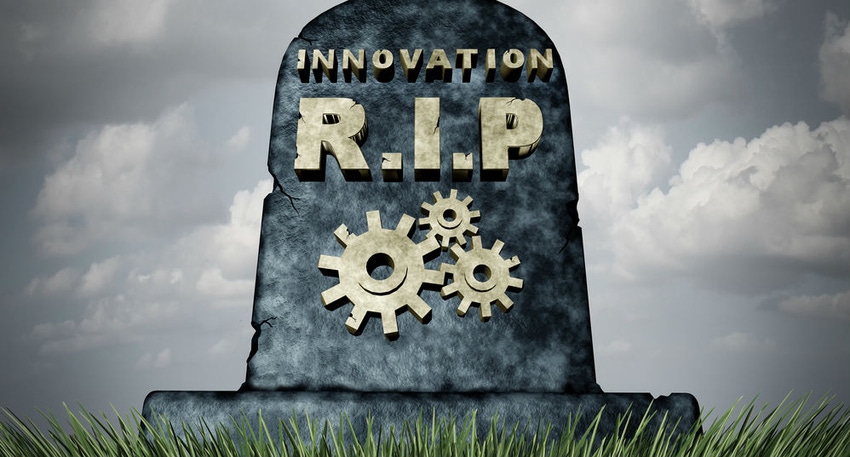The classic battle between efficiency and creativity is well underway in the industry and channel, too.

While lackluster sales in China are the purported reason why Apple holiday sales came up short, some Monday morning quarterbacks are putting the blame elsewhere. Apple, they say, simply isn’t delivering the tech innovations that it once did. And it’s not alone.
“We need the next wave of innovation, and we need it now,” wrote New York Times columnist Kara Swisher after Apple made its surprise announcement on subpar sales. In an article entitled, “Is This the End of the Age of Apple?” she laments the lack of innovation coming from the iPhone maker and plenty of other tech companies these days.
“We are stumbling in the dark,” she opined.
She may be right. Consider the countless “what’s ahead for tech in 2019” lists that populate the web right now. Many suggest the next big thing will be blockchain, quantum computing, AI, the IoT or AR/VR. These are very cool of course, but not hardly new or – more importantly – mainstream.
Of the new-new ideas that seem promising, autonomous vehicles and 5G networks are the pick of many experts to be the next big thing. Seeking Alpha’s Matt Bohlsen thinks “transport as a service (TaaS) will start to grow in 2019,” but it still feels years away to me. In addition to technological and regulatory hurdles, the industry will still have to overcome cultural ones, as evidenced by the fact that people in Phoenix are attacking Waymo’s self-driving cars.
My gut says the next big thing won’t be one thing but a combination of many innovations, including, as Gartner points out, “new business models.”
What about the channel? Right now, it is enjoying very good times — some of the best in the past decade. They are expected to continue for some time.
“What’s happening now [among SMB customers] resembles what happened in the enterprise between 1996 and 2002,” Fred Voccola, CEO of Kaseya, recently told Channel Futures. A small dental practice, he says, has more technology at its disposal for a mere $1,000 per month than a Fortune 500 company did just 20 years ago. This includes technology to market itself, manage its customers, bill and collect payments and secure patient data.

Kaseya’s Fred Voccola
“Our thesis at Kaseya says that what small businesses want to consume is going to get exponentially more and more complex. The functionality that Citibank or General Electric or Deutsche Bank get, small businesses will want as soon as possible. So MSPs must figure out ways how to deliver that,” Voccola says.
This explains why he and other who sell technology to help make channel companies run more efficiently are so upbeat. But is the current market opportunity enough for the channel to thrive on long-term? The question is particularly prescient given the number of end customers that want to pursue their own intellectual-property (IP) development with the help of a trusted partner. As this trend plays out, the role and responsibility of many channel companies will evolve.
“As collaboration like this between tech companies and their customers increases, so will the questions regarding who owns the patents and resulting intellectual property,” wrote Microsoft president Brad Smith in a blog published in 2018. “There is growing concern that without an approach that ensures customers’ own key patents to their new solutions, tech companies will use the knowledge to enter their customers’ market and compete against them — perhaps even using the IP that customers helped create.”
While that might sound extreme to many channel companies, it’s important to note that …
… as many as six in 10 solution providers already pursue some custom application development today, according to CompTIA. The figure is only expected to grow.
As it does, MSPs, VARs, agents, cloud providers and more should consider the situation that Apple and others find themselves in. While they have tried to optimize their business processes, they have unwittingly limited their innovation. Given the plethora of research that finds creativity is more important than efficiency in business, this is a shame.
Many tech companies have tried to overcome the issue, of course. But the fact remains that big tech companies are still stuck with the problem that Clayton Christensen pointed out more than a decade ago in “The Innovators Dilemma”: It’s extremely difficult to prop up existing revenue streams while creating the breakthroughs that lead to new ones.
For a while, Apple broke the mold. But now Apple is the mold. Seriously, when you ask yourself, what was the last great piece of engineering that it came up with, you might be tempted to say the Norman Foster/Jony Ive creation that is Apple Park. It would be outrageous to suggest that it sucked all the creativity from its key executives.
But would it be wrong?
About the Author(s)
You May Also Like


